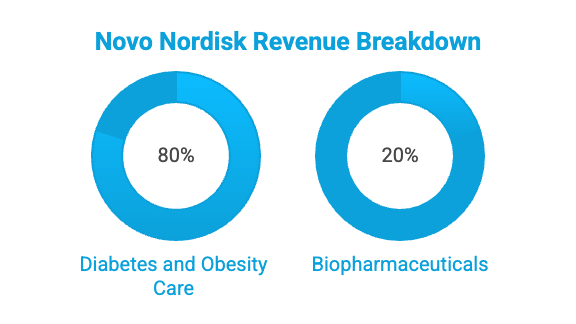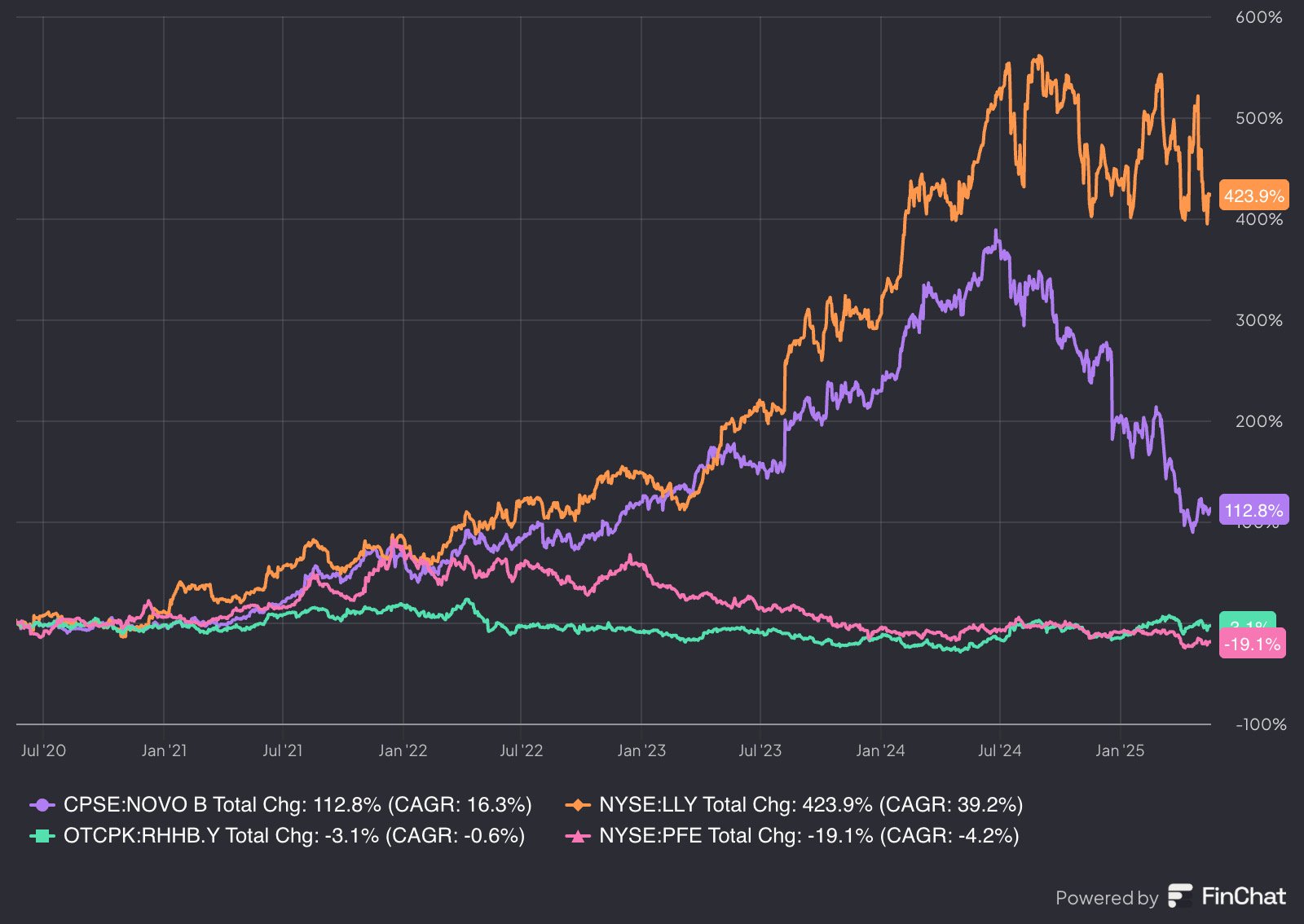Novo Nordisk: The Obesity Giant Built for Long-Term Compounding
Introduction
Novo Nordisk has quietly become one of the most dominant and profitable companies in global healthcare. Founded a century ago through a medical breakthrough and a love story, it now leads the charge in treating diabetes, obesity, and chronic diseases. If you've heard of Ozempic or Wegovy, you already know part of the story. But the full picture is even more compelling.
💰 How Do They Make Money?
Core business: Biological drugs for diabetes, obesity, and rare endocrine disorders
Revenue engine: Chronic-use treatments ensure consistent, recurring cash flow
Segments:
Diabetes & Obesity: ~80% of revenue (GLP-1s, insulin)
Biopharma: ~20% (rare blood and hormonal diseases)
Global footprint: 77,000+ employees in 168 countries
👥 Management, Culture & Skin in the Game
CEO: Lars Fruergaard Jørgensen
Insider ownership: Very low (~0.24% total, $101M in value)
Control: 77.3% voting rights via Novo Holdings A/S, owned by the Novo Nordisk Foundation
Culture: Mission-driven, long-term focused, promotes ethical and sustainable growth
Verdict: High integrity and discipline, but lacks founder-style audacity
📈 Capital Allocation
R&D investment: Deep commitment to innovation (oral GLP-1s, CagriSema, Amycretin)
Manufacturing scale-up: $24B+ in U.S. buildout
Selective M&A: Acquisitions to accelerate drug development and production
Shareholder returns: Regular dividends and share buybacks
💲 Profitability
Gross margin: 84.6%
Operating margin: 48.4%
FCF margin: 26%
Cash conversion: 96%
ROIC (5-yr avg): 29.3% | ROE: 81.3%
These are elite margins—rare even among tech giants
Competitive Advantage
Brand dominance: 70%+ of global GLP-1 market
Pipeline strength: CagriSema, Amycretin, and oral semaglutide are category leaders
Scale moat: Efficient global manufacturing and distribution
Barriers to entry: IP, legal defense, and brand trust
Recurring revenue: Built-in demand from chronic use drugs
source: www.silvercrosscapital.com
📊 Valuation
P/E: 18x | P/FCF: 25x
DCF margin of safety: ~35% assuming 16% growth
Context: Trades at discount to Eli Lilly, but with comparable upside
View: High-quality compounder trading at a reasonable price
💳 Balance Sheet
Net cash: DKK 23.2B (~$3.5B)
Interest coverage: 44.4x
FCF/Total Debt: 1.1x
Goodwill/Assets: Just 4.3%
Conclusion: Financial fortress with optionality to invest, acquire, or return capital
🌎 Market Potential
Obesity market (2024): $15.9B, growing at 22.3% CAGR
800M+ people globally with obesity
Novo's advantage: First-mover, 70%+ market share, strong pipeline
Tailwind: Obesity drugs are becoming cultural and economic megatrends
Source: World Bank
🏆 Performance Comparison
Novo Nordisk (NOVO B): +112.8% since 2020 | CAGR: 16.3%
Eli Lilly: +423.9% | CAGR: 39.2%
S&P 500: +113% | CAGR: 16.3%
Takeaway: Solid long-term performer, with new growth levers in play
⚡ Key Risks
Overdependence on semaglutide (Ozempic/Wegovy)
Regulatory and pricing pressure, especially in the U.S.
Global supply chain complexity and capacity strain
Innovation risk if R&D pipeline falters
Legal/IP risk from compounders and generics
Cybersecurity and digital disruption
🏋️ Conclusion
Novo Nordisk is the rare combination of scale, durability, and growth. With elite margins, dominant market share, a clear expansion roadmap, and a fortress balance sheet, it's built to lead the next decade of global health transformation.
Yes, insider ownership is low. No, it doesn’t have a flamboyant founder. But it has something better: a long-term vision backed by execution and world-class financials.
In a market chasing hype, Novo offers substance. It's a high-conviction buy for investors seeking quality, predictability, and long-term upside in one of the largest medical opportunities of our generation.
SCC Score: 85% ✔ Buy






